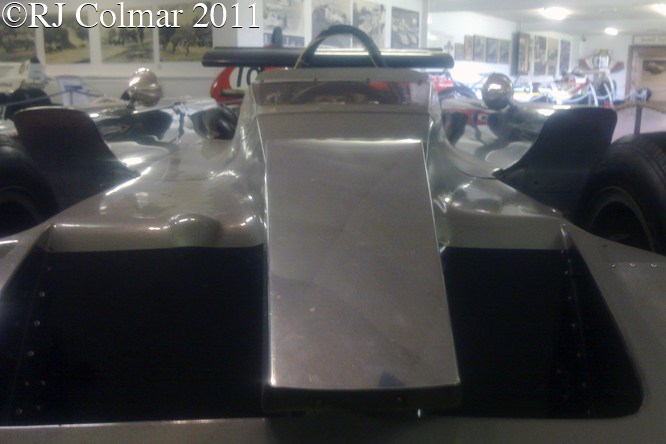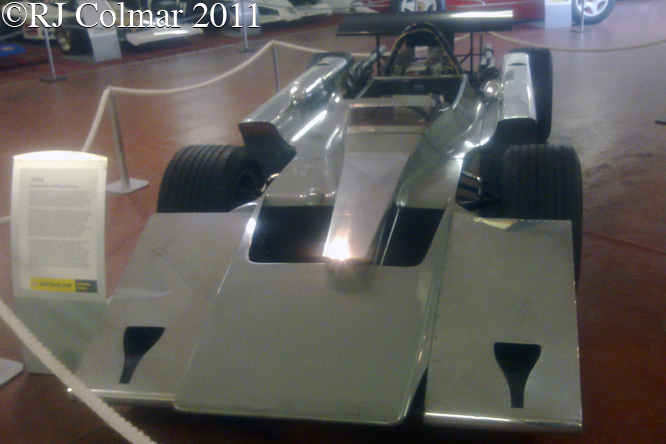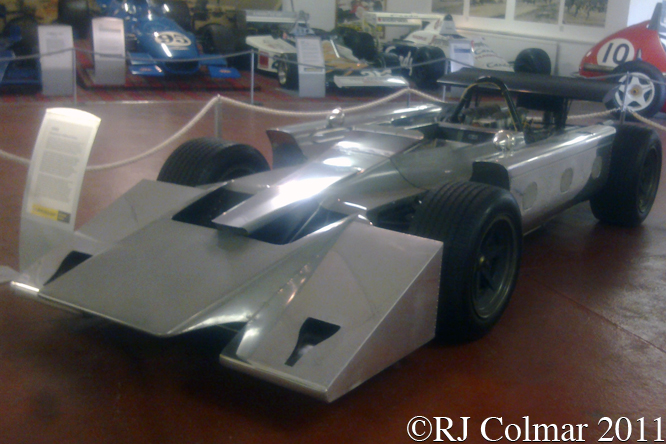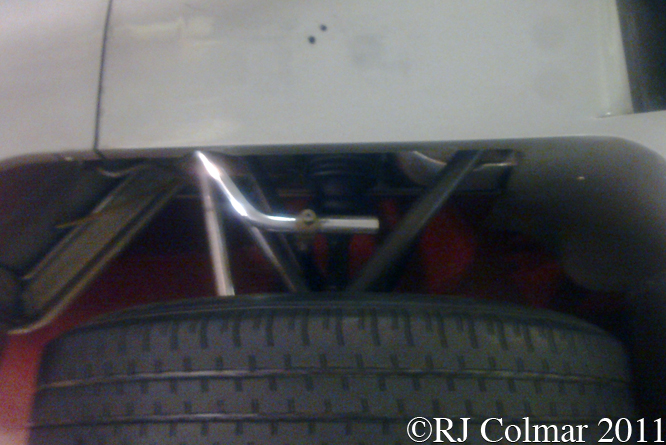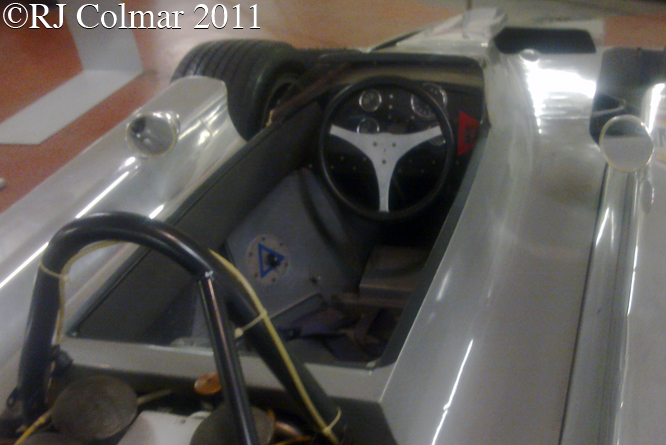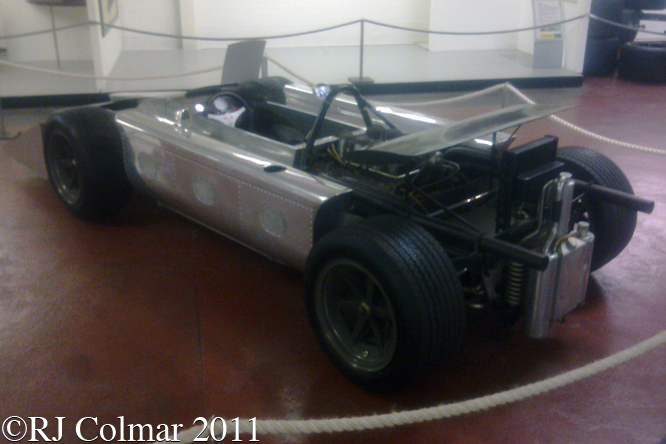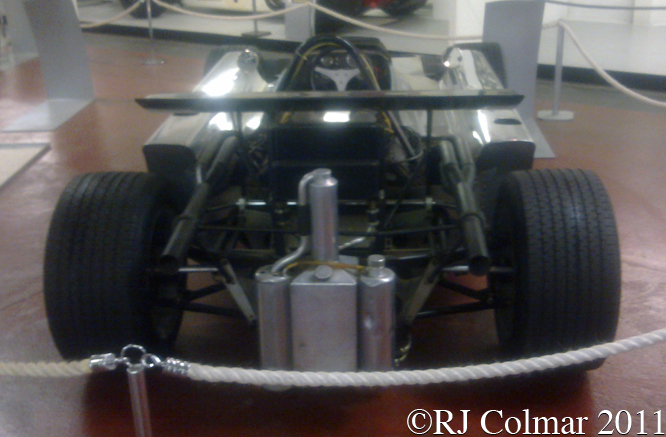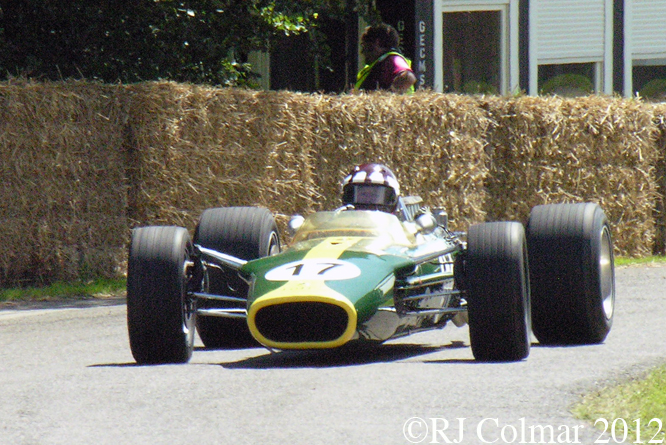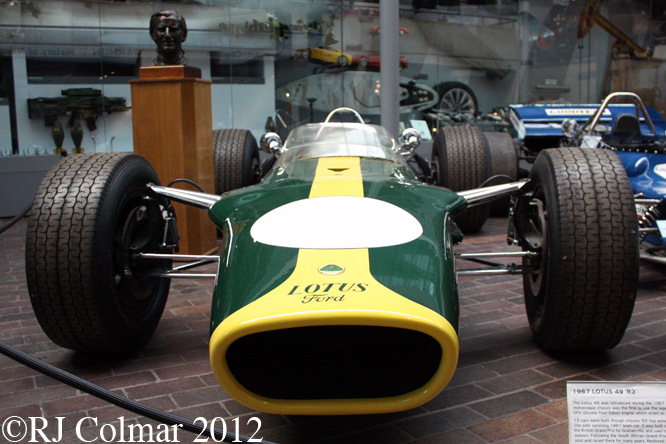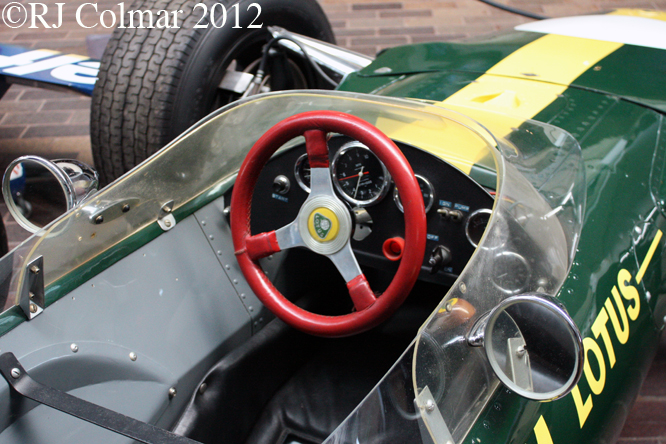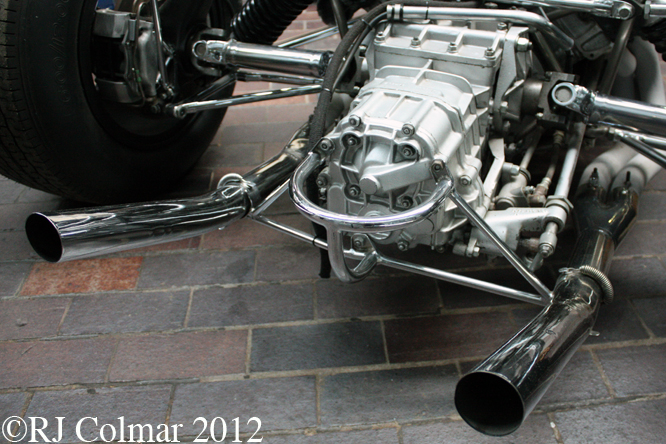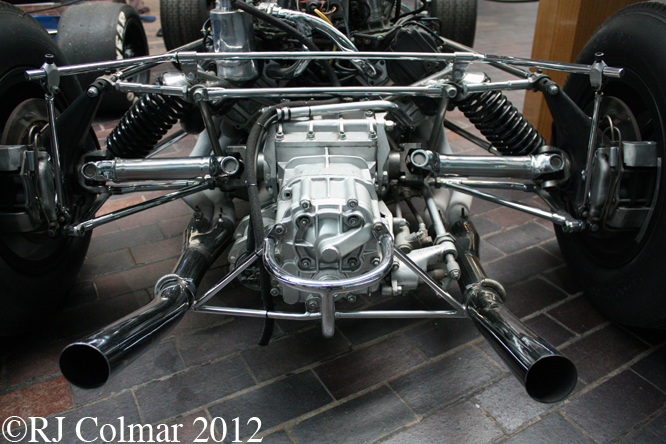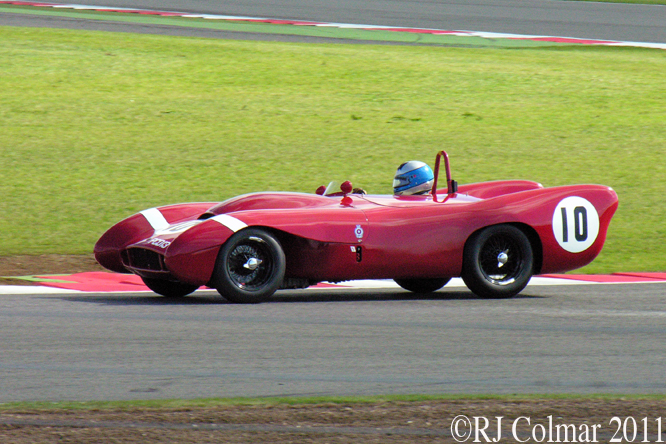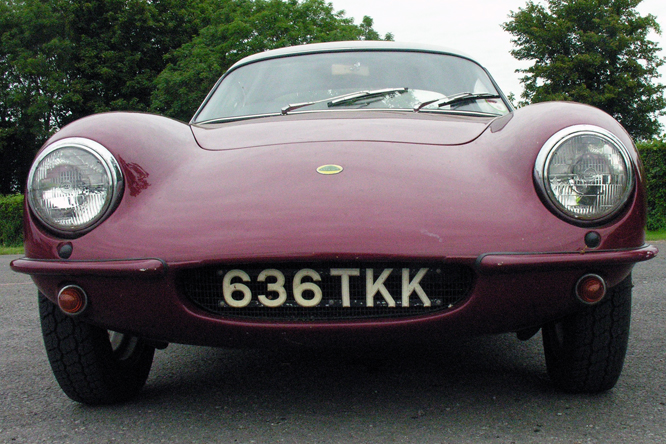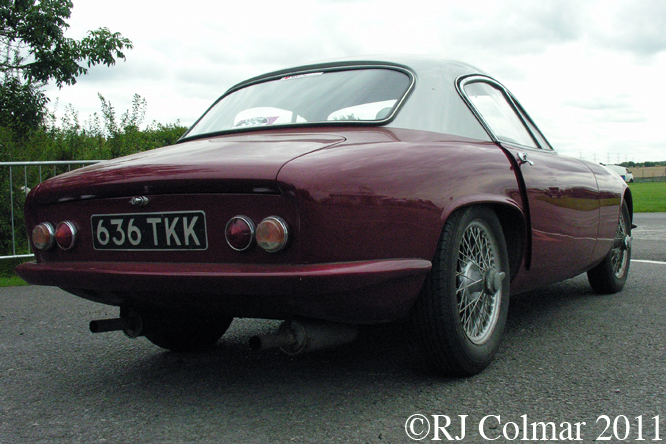On Saturday I got up at 5am in order to get to the start of proceedings for at the Silverstone Classic meeting. After a scenic drive through Gloucestershire with a little early morning fog along the A40 I arrived in good time.

Jon Milicevic, driving a Cooper T59 comfortably won the days opening Formula Junior race, for cars built between 1959 and 1963, from another Cooper T59 driven by Sam Wilson.

Simon Hadfield and Micheal Lyons provided the early entertainment in the Peter Gethin Trophy race for stock block open wheelers, Simon’s F5000 Trojan T101 set up for good performance through the corners can be seen being hounded by Micheal Lyons F5000 Lola T400 which was set up for better straight line performance. Unfortunately Simon who started from third lost it after 6 laps handing pole man Micheal a narrow victory over Mark Stretton driving a much smaller capacity Formula 2 March. Simon recovered to take third.
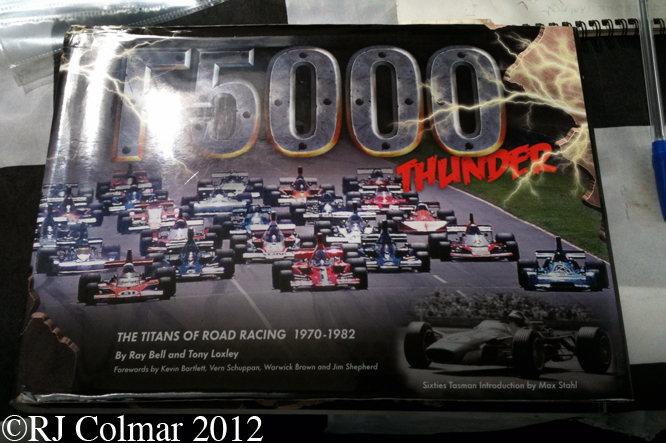
During the lunch break I caught up with several members of the TNF Forum including John who makes the annual pilgrimage from Australia, on this occasion he brought a pre production copy of F5000 Thunder the Titans of Australian Road Racing 1970 – 1982 co authored by Ray Bell and Tony Loxley, if your a fan of Formula 5000 I guarantee you will enjoy the many stories in this 406 page book with over 800 photographs which ever part of the world you happen to live in.

The Alan Mann Trophy for under 2 litre / 122 cui touring cars looked to be a walk over for the #51 ALFA Romeo driven by Alex Furiani despite the best efforts of Jackie Oliver, who will be celebrating his seventieth birthday in a couple of weeks, driving the #100 BMW 1800 TiSA seen here sliding through Maggotts in third place. An incident requiring the safety car disrupted the event which was won by Sean McInerney driving the #67 Lotus Cortina who started from 38th on the grid ! Simon Hadfield did well to recover from a stop go penalty to bag second place on the last lap to finish less than two seconds behind McIerney in the #1 Lotus Cortina co driven by Leo Voyazides which had started on pole.

Alex Buncombe made the most of pole position in the Stirling Moss Trophy driving the #46 Costin bodied Lister Jaguar he was sharing with Andrew Smith which was never lost it’s lead on it’s way to victory. Second place was initially disputed by the #33 Knobbly Lister Jaguar, of Jon Minshaw and Martin Stretton which made a great start from 6th on the grid, the #61 Birdcage Maserati of Jason Minshaw and the McIntyres #15 Lotus seen above. The #33 Lister failed to finish while the McIntyre Lotus 15 and Jason’s Birdcage finished 3rd and 4th respectively behind the Dodds Cooper Monaco T49.

Two races for Formula One cars were next up after lunch, The Daily Express Trophy for 1970 to 1983 cars was led by Micheal Lyons in the #24 Hesketh 308E who unfortunately could not get his car to complete lap nine after slowing for an incident between two cars which were stopped on the track. A lucky victory therefore
handed to Bill Coombs in the #33 Tyrrell 009 when the race was called early to clear up the mess. Steve Hartley in the #31 Arrows A4 was classified 2nd with Micheal Fitzgerald seen above in 8th place came through to claim 3rd in his #28 Williams FW08.
The pre ’66 rear engined Grand Prix cars race was won by Jason Minshaw from John Harper both driving Brabham BT4’s above 8th place Roger Willis, driving his #48 Cooper T51, is seen leading a pack through the ‘Arena’.

As the Gentleman Drivers Pre ’66 bus got underway I made my way over to the “Wing” pits complex on an open top Leyland Bus, coming the other way we encountered this 1963 GUY Arab Mk 5. Soon after the Mk 5 was built GUY was taken over by Jaguar.
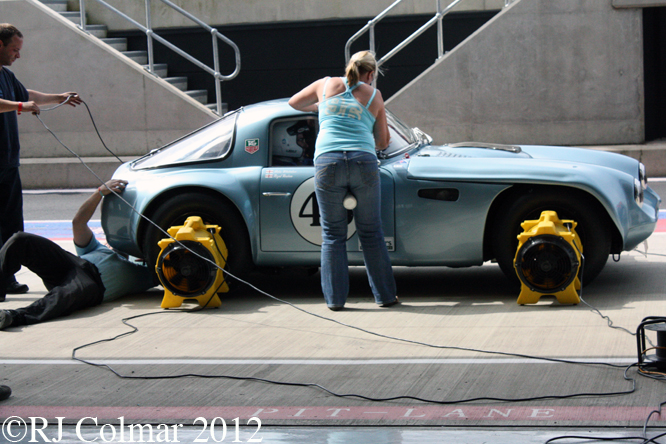
During the Silverstone Classic meeting pits access is unrestricted as evidenced by this photo of Mike Whitaker Snr’s pit stop. I am sure back in the day brake coolers were not ‘de rigueur’ when his 1965 4.7 litre / 286 cui V8 powered TVR Griffith was built. Mike retired shortly after this photo was taken, the race was won by Jon Minshaw and Mike Stretton driving an E-Type Jaguar.

This mid 1990’s Renault Williams Laguna Touring Car is probably legible, for but was not entered in the Fujifilm Touring Car Trophy, it reminded me of the time in late 1998 when I seriously under estimated the power of Play Station and found myself engrossed in a game called TOCA 2 featuring a similar Laguna and seven other vehicles from the same era.

As I got to the end of my pits walkabout, which included a spell on the pit wall during the Gentleman’s race, I stumbled across a hive of activity as the Morgan ‘celebrity” drivers prepared to qualify for their race. Above well known racer and AC/DC vocalist Brian Johnson signs an autograph before qualifying third ahead of fellow musician Jay Kaye. Qualifying and the race was won by TV star Kelvin Fletcher who regular readers may remember I saw a couple of months ago driving a #17 Mini at Castle Combe. Brian and Jay came second and third respectively in the race.
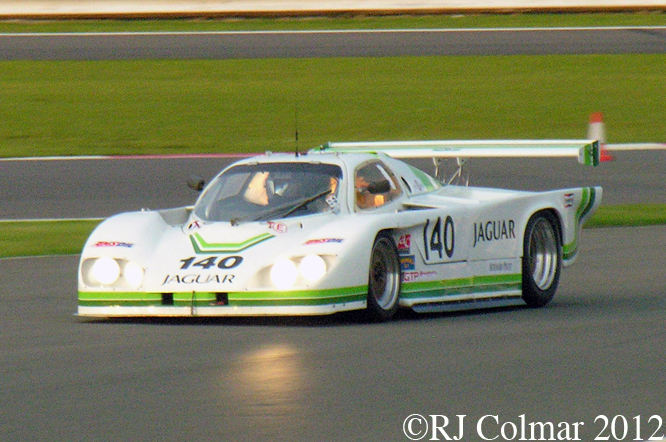
I returned to the car after my pit visit for a cat nap which lasted a little longer than intended so I unintentionally missed a couple of races however fortunately I woke up in time to catch the finale of the day for Group C Endurance cars, Gareth Evans won the race despite a late spin relatively easily from Roger Willis in his Lancia LC2. Above the race was not the most entertaining but for my money seeing the Group C cars race in the early evening was worth the price of entry on it’s own. Above one car I did not get to see race in period was the 6 litre / 366 cui IMSA GTP Jaguar XJR 5 seen here with Don Miles at the wheel, after qualifying last from 21 Don finished 12th from 16 finishers. Absolutely cream crackered after a Hard Day’s Night I got home just after midnight and slept like a log.
Thanks for joining on this “Hard Day’s Night” edition of “Gettin’ a li’l psycho on tyres”, I hope you will join me again tomorrow. Don’t forget to come back now !
